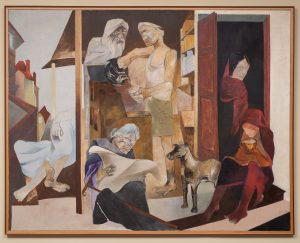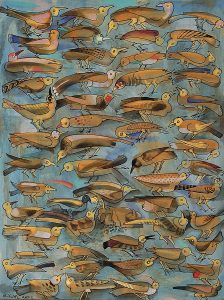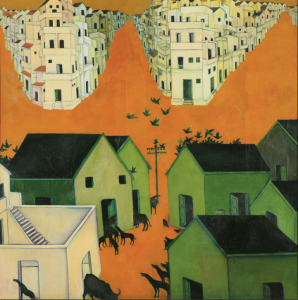Around the Table: Conversations about Milestones, Memories, Mappings At KNMA https://ift.tt/vuwMdRX
The post independence era in India is often remembered as a time of tremendous turmoil, understandably so. Those were tumultuous times and it’s during this time that art can play a catalyst of sorts- assimilating emotions and allowing for them to come alive. Closely held beliefs found voices and this is what Around the Table: Conversations about Milestones, Memories, Mappings showcases. This is a recollection of times and practices of a generation of artists who shaped the landscape of art in post-Independence India.

The artists played critical roles in many capacities – as individuals, as collectives and as fellows -responding dynamically to the emerging demands of a young nation. The cities of Bombay and Delhi were the hotbed of expanding mindsets, the spirit of cosmopolitanism weaved in. Places like Baroda turned into testing grounds for art-institutional experiments, the seven citizen-artists–Akbar Padamsee, Krishen Khanna, Gulammohammed Sheikh, Arpita Singh, Jyoti Bhatt, Himmat Shah and Vivan Sundaram—stood out as distinct voices with clear positions, unapologetically honest about their beliefs. For the times to come, they would remain as trailblazers of not just artistic languages but as pedagogues, initiators and interlocutors of modern and contemporary art in India, often blurring the contours of the nation through their commitment to cultural heterogeneity and transnational ideals.

A few trajectories that contour the exhibition seek to uncover intersections and chance- encounters between the practices of these seven artists as friends, colleagues or fellow travellers. They mobilized to form artists groups like Group 1890 (formed in 1962), set up publications such as the Vrishchik (1969-1973), gave rise to artistic experimentations in workshops such as the Vision Exchange (1969-1972) workshop or the historic exhibition Place for People (1981) to name a few, paraded together protesting against censorship and coercions. Although the exhibition inspissates by the practices of seven artists, the show aims at creating signs and indicators towards the practices generated from the 1950s onwards by many others. The exhibition will unfold these interrelationships through iconic artworks, photographs and archival material primarily from the KNMA collection.

Roobina Karode, Chief Curator & Director, KNMA, says, “The present exhibition is approached as a midnight feast where the seven co-travellers have gathered to rest their bundles of images and stories after their long travel. As dawn, slowly bleeds into the fading darkness and wanderers are placed around the tavern’s dinner table, a rich repertoire of ephemera and memories unfold. The many accounts constituted by the detritus of these artistic connections and crossings build up a vision of history and time that I was fortunate to inherit from some of the awardees showcased in the exhibition, who were also my teachers and mentors.”
Photographs courtesy: KNMA
from Elle India https://ift.tt/zM5BKuo
Comments
Post a Comment